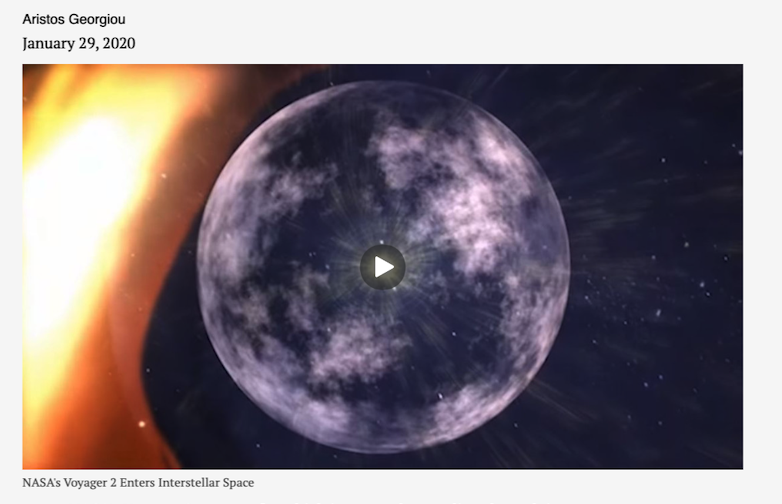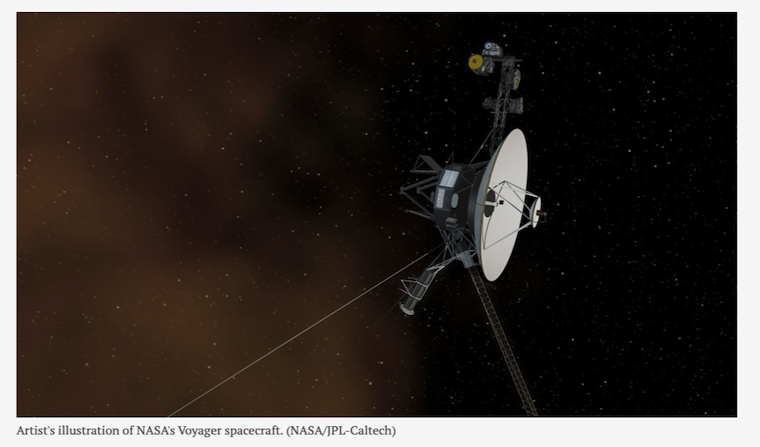
NASA’s Voyager 2 spacecraft—which is currently traveling through interstellar space—is suffering technical difficulties. Engineers billions of miles away, on Earth, are now trying to fix the issue.
The space agency reported that Voyager attempted to make a scheduled maneuver on January 25 that normally involves the spacecraft rotating 360 degrees to calibrate its onboard magnetic field instruments.
However, this maneuver didn’t turn out as planned and one of the spacecraft’s autonomous fault protection routines was triggered. These routines are designed to protect the spacecraft from further damage when problems occur.
According to the initial information received by engineers at NASA’s Jet Propulsion Laboratory (JPL) in Pasadena, California—which manages Voyager 2 and its sister craft, Voyager 1—an error left two power-hungry systems operating at the same time.
With both these systems running, Voyager 2 tried to draw too much power from its energy supply and this caused the fault protection routine to kick in, turning off the spacecraft’s science instruments.
Operators at JPL have since managed to turn one of the power-hungry systems back off and switch on Voyager 2’s science instruments again. However, they are still not collecting data from the spacecraft as of January 28, and engineers have more work to do if they are to restore normal operations.
Fixing problems on Voyager is a tricky business given that it is currently located around 11.5 billion miles from Earth. This means simply communicating basic instructions with the spacecraft is a lengthy process.
Despite the fact that signals being sent to and from the spacecraft travel at the speed of light, they still take around 17 hours to cross the distance. Engineers thus have to wait a total of 34 hours just to see if their instructions have worked as intended.

Launched 16 days apart from Cape Canaveral, Florida, in 1977, the two Voyager probes hold the honor of being the furthest man-made objects from Earth, having both crossed the boundary of the solar system into interstellar space. Voyager 1 achieved this feat in 2012, becoming the first spacecraft to do so.
In the more than 40 years that the Voyagers have been in space, the probes have collected valuable data, vastly expanding our knowledge of the solar system.
Voyager 2, for example, is the only spacecraft that has completed fly-bys of all four outer planets. It was also the first to beam back images of Jupiter’s rings, as well as those of Uranus and Neptune.
The probes have also helped to discover several new planetary moons. They were also the first to identify active volcanoes beyond the Earth (on Jupiter’s moon Io) and signs of an ocean on another world (below the icy surface of Jupiter’s moon Europa).
